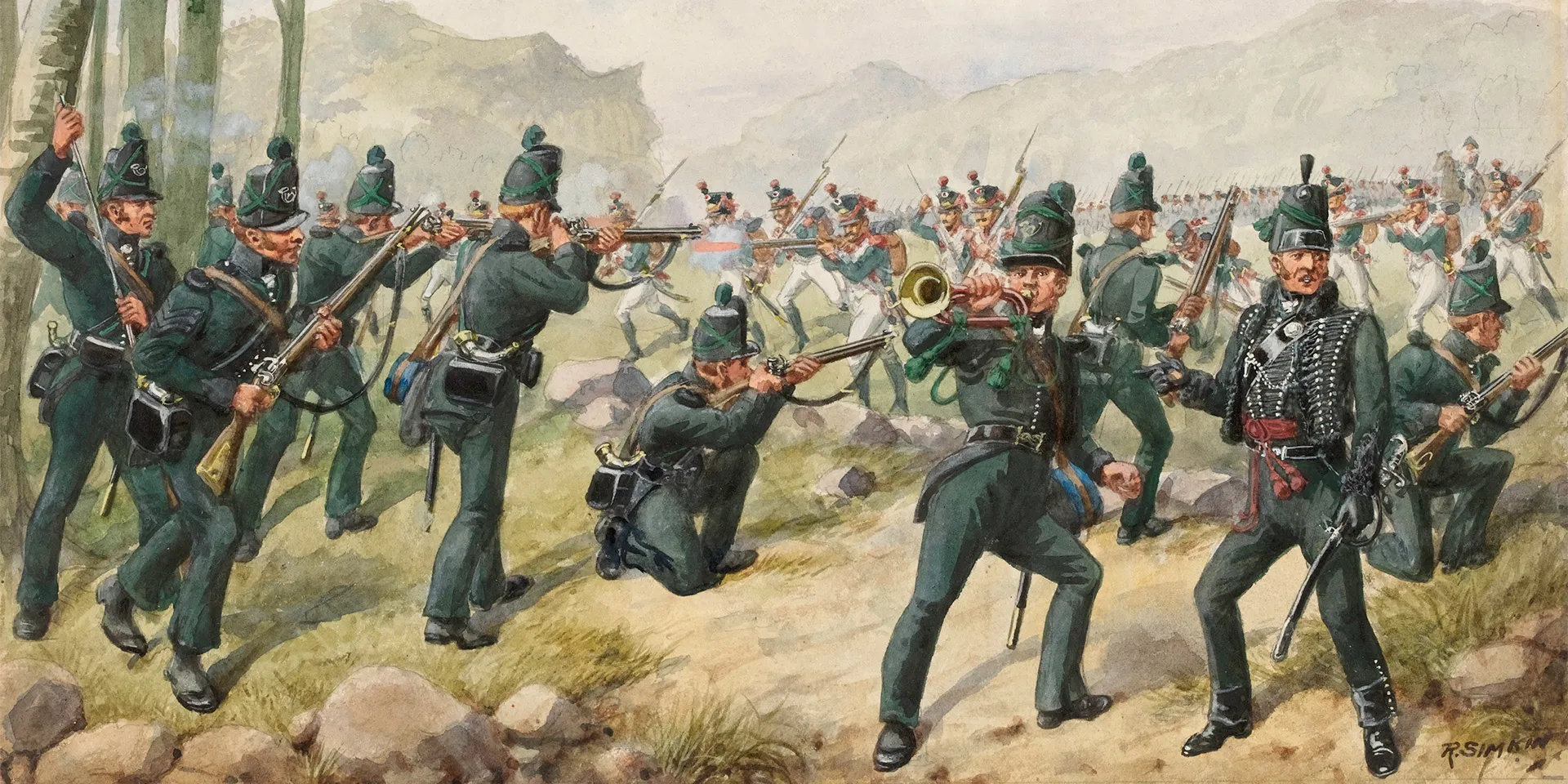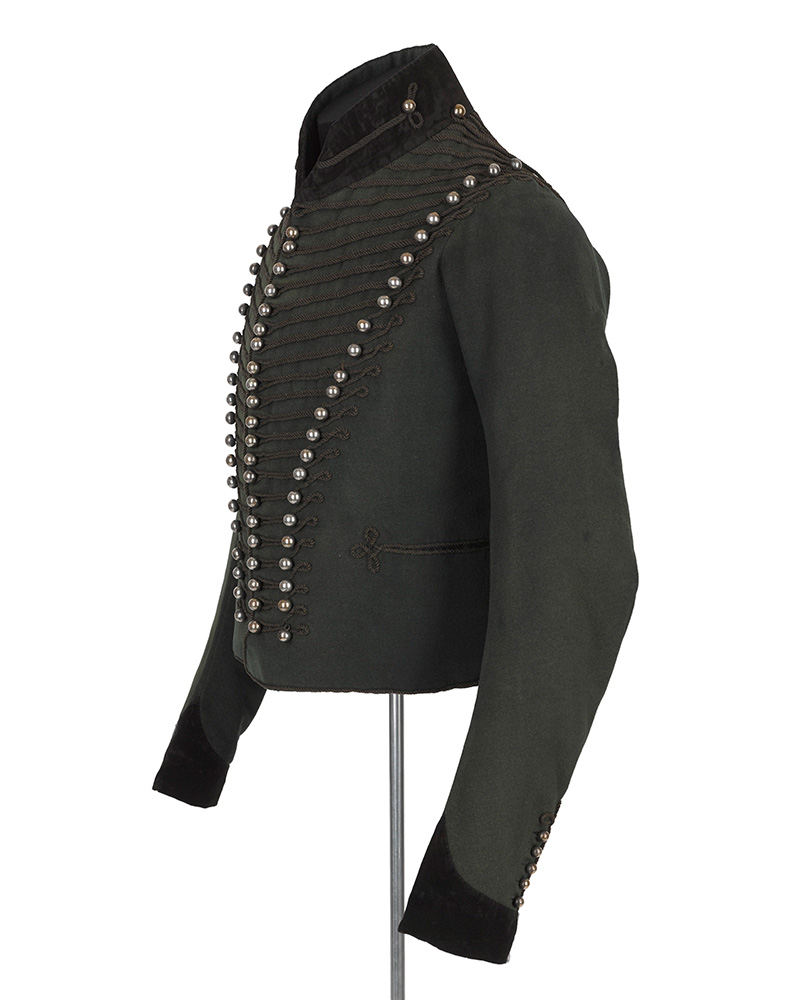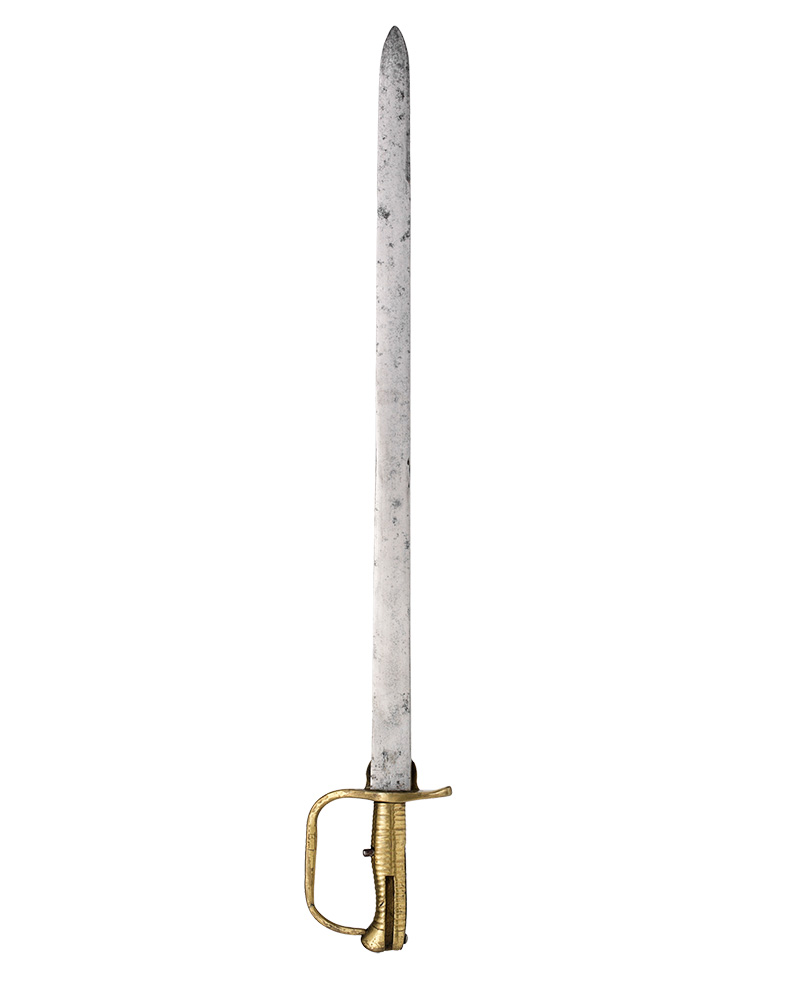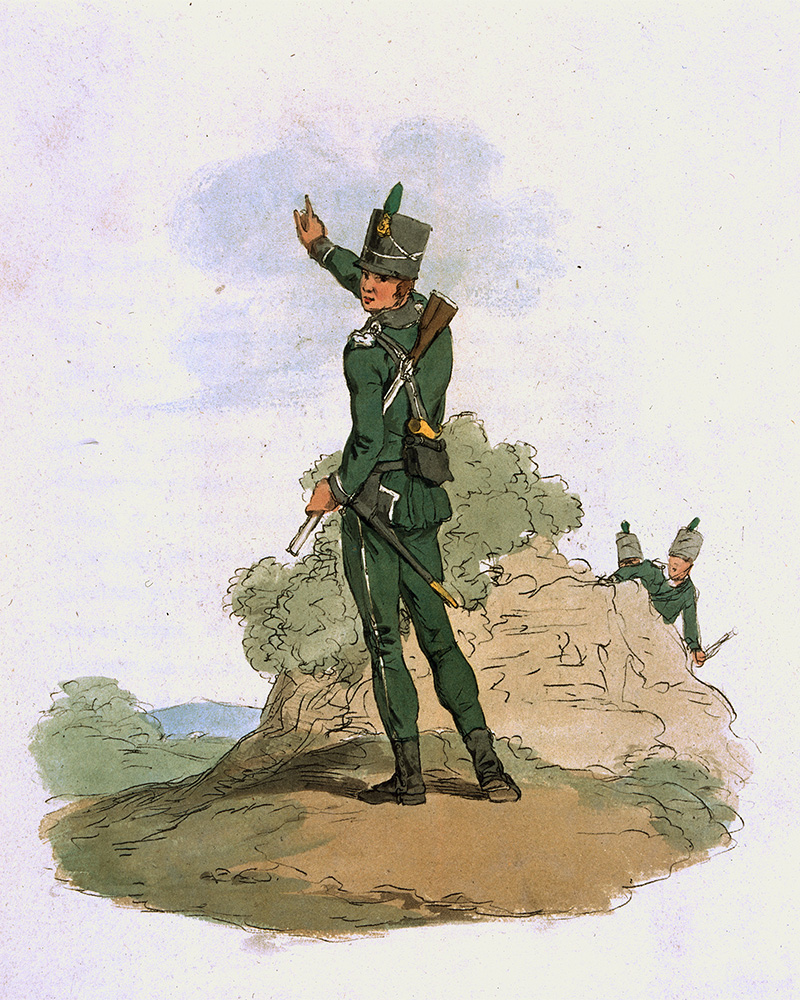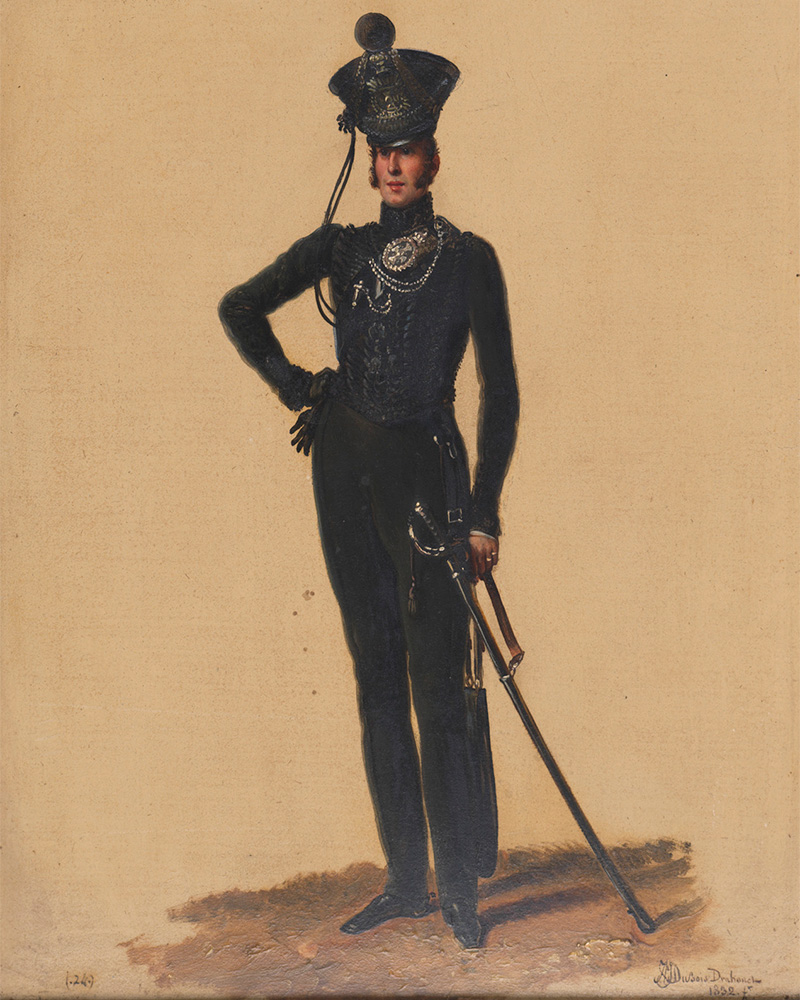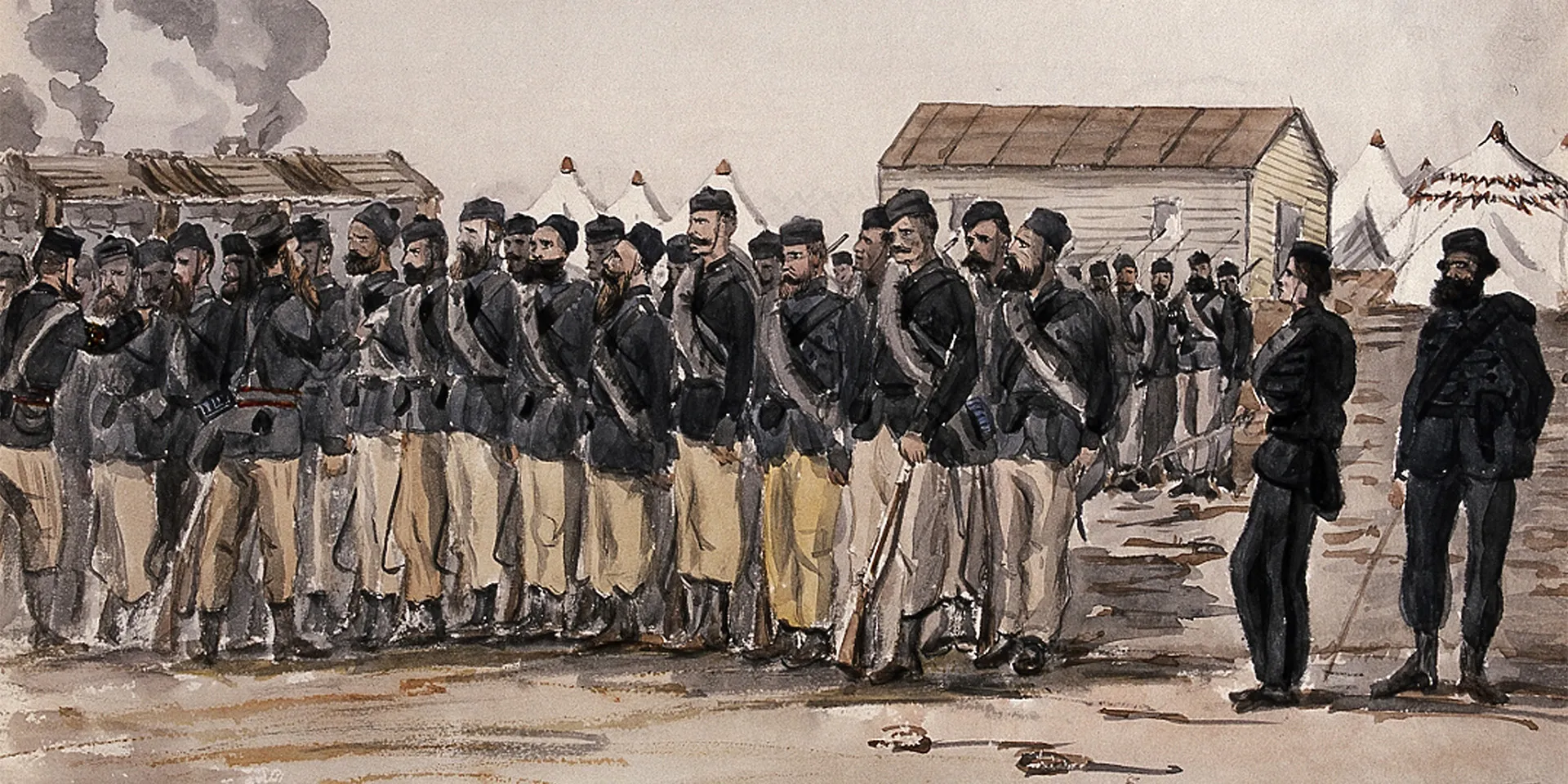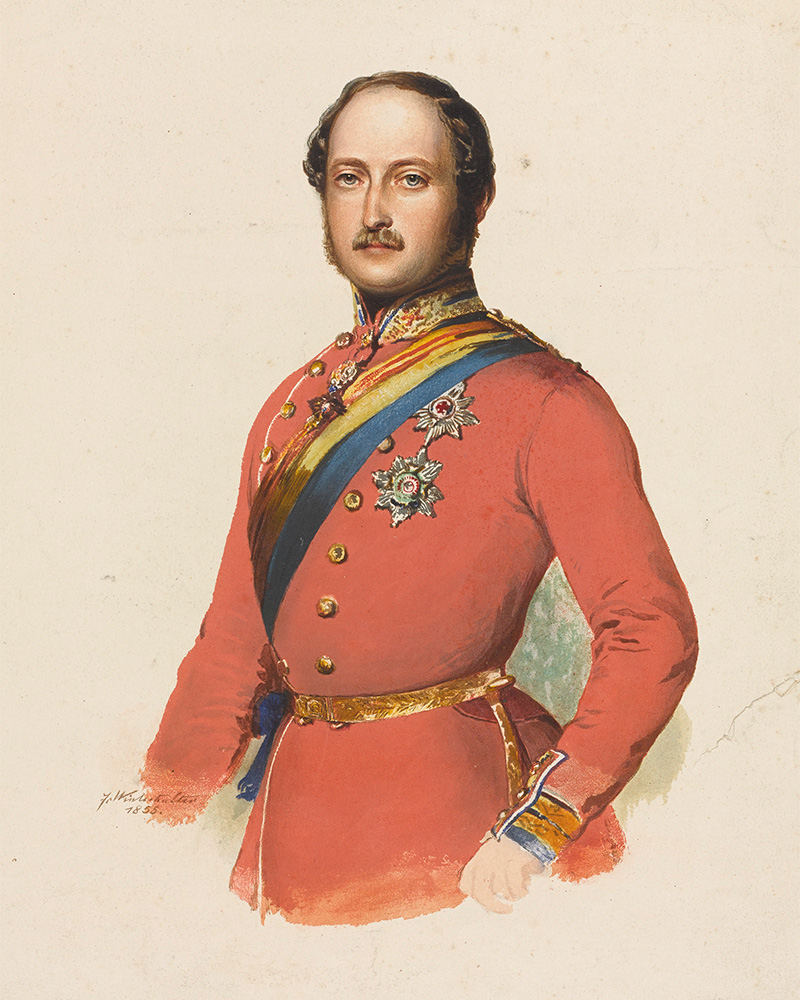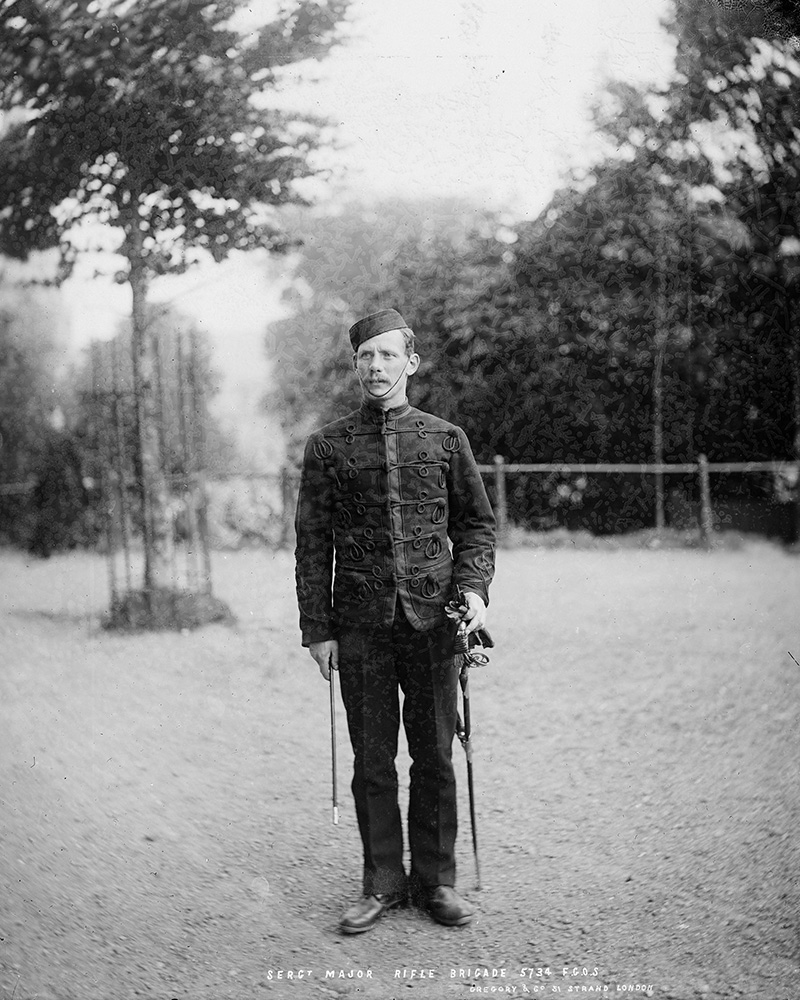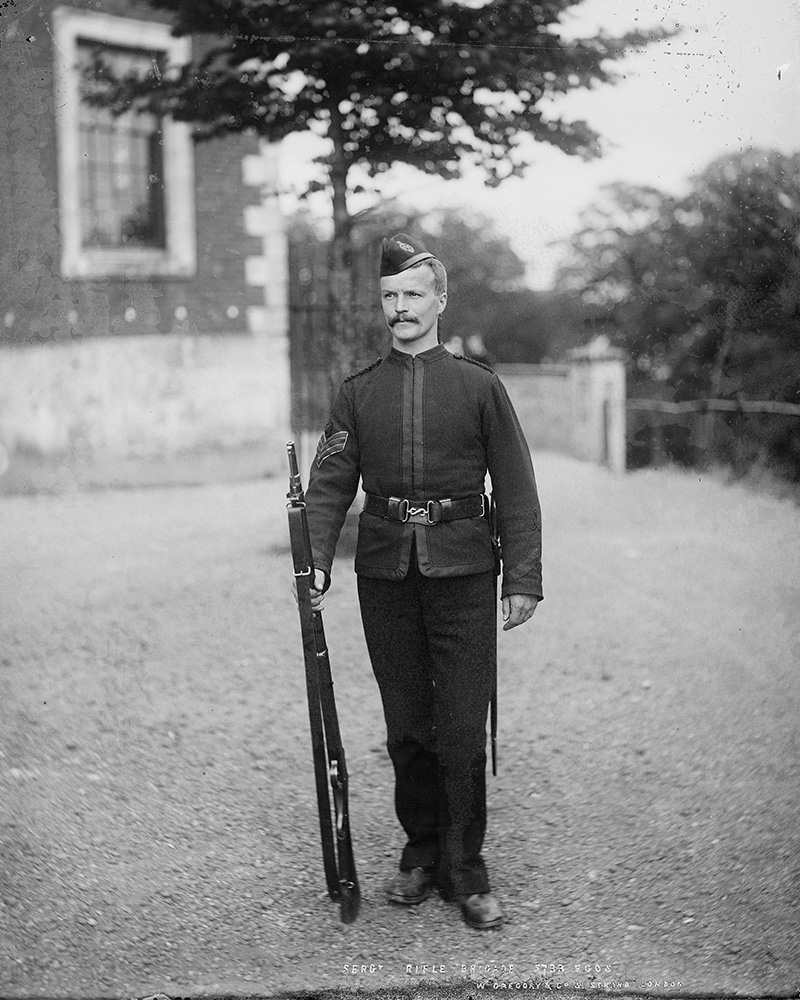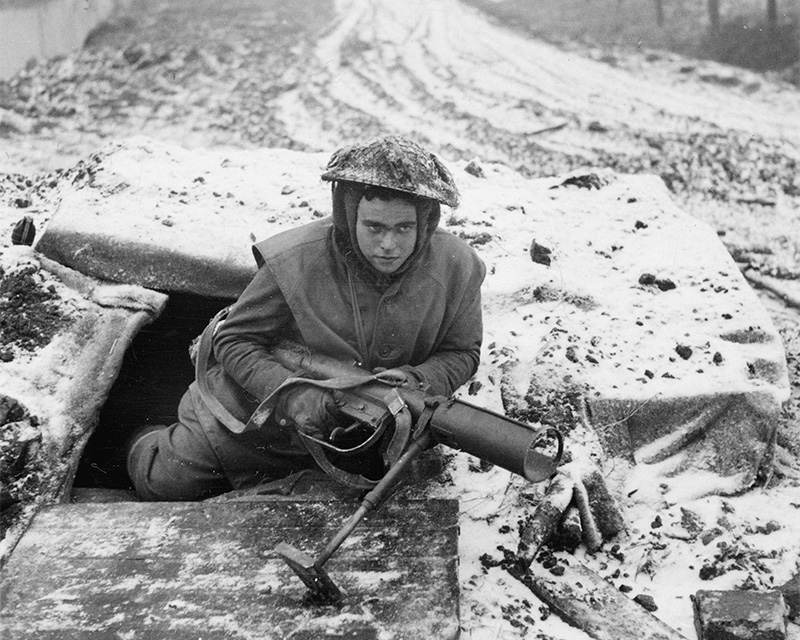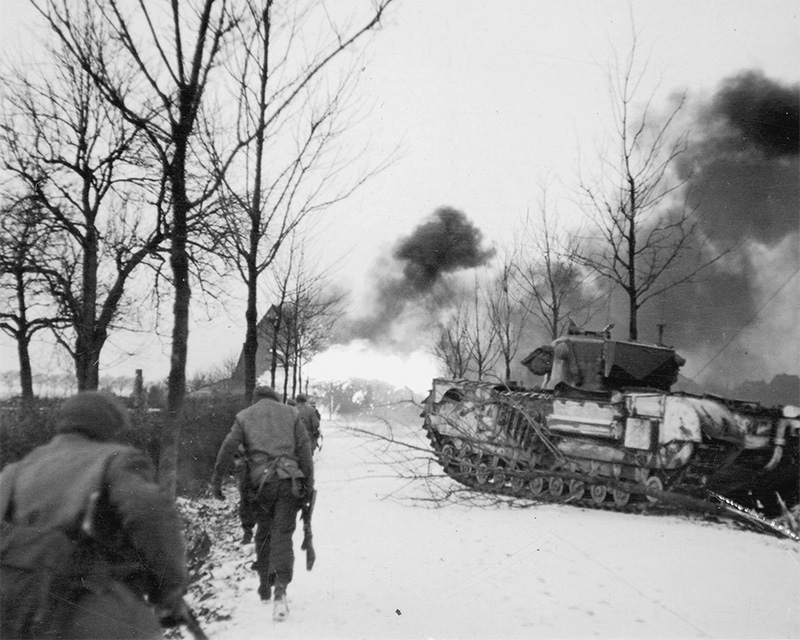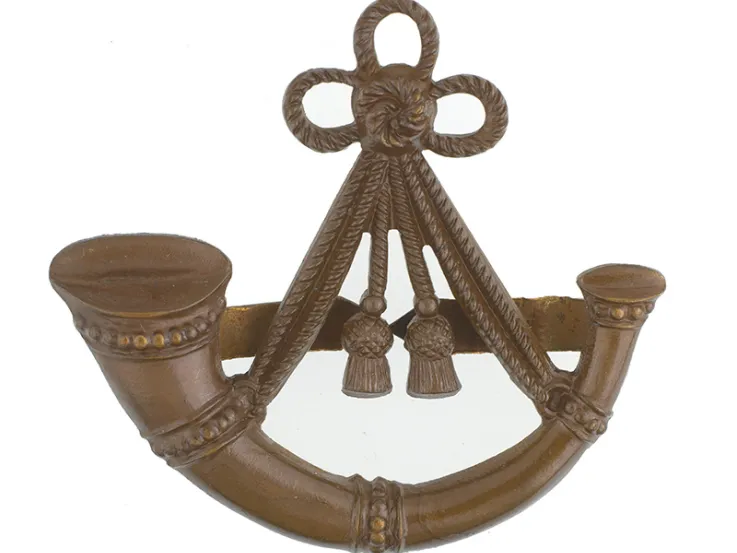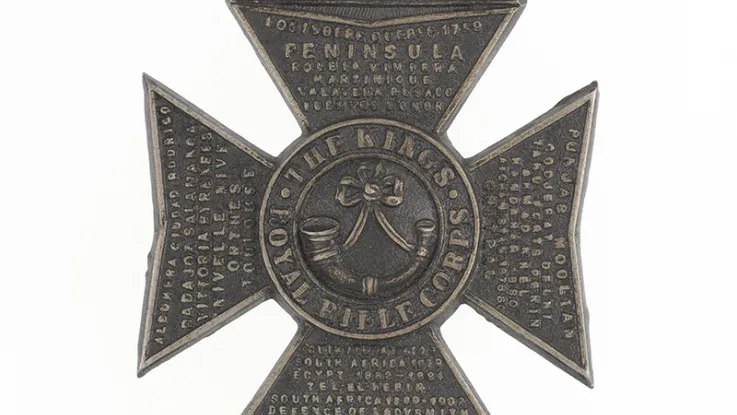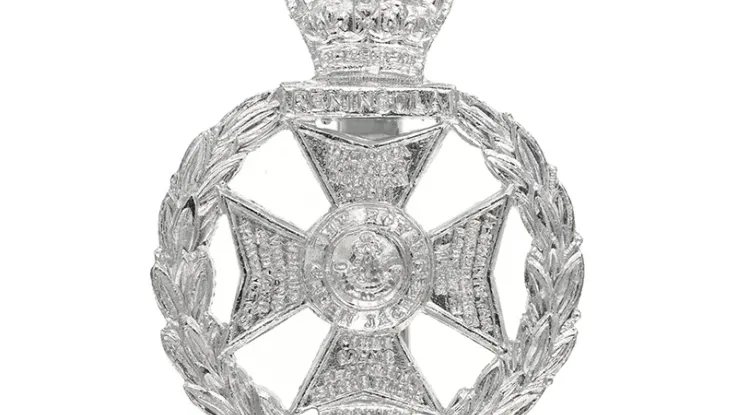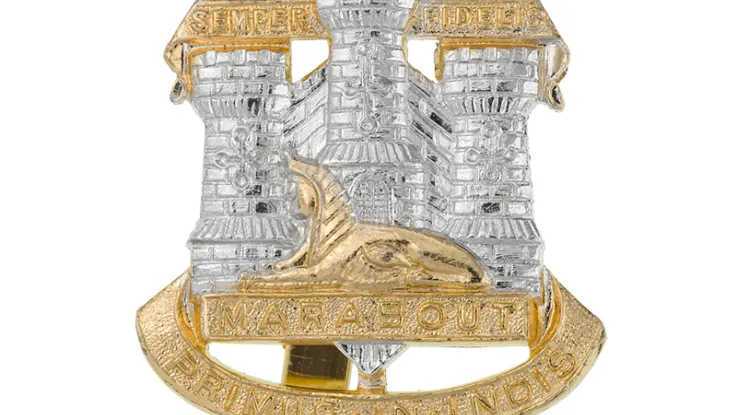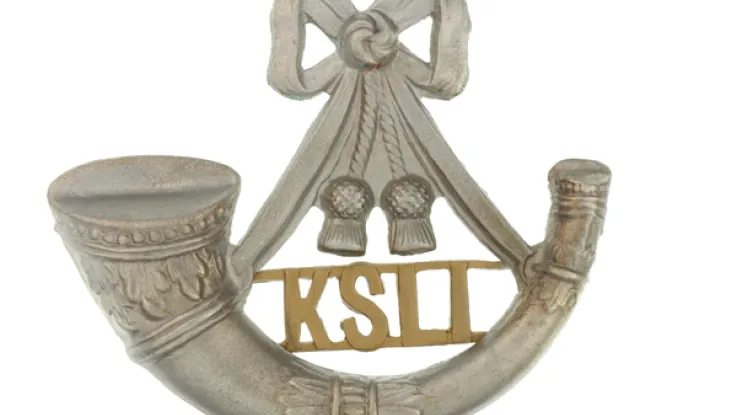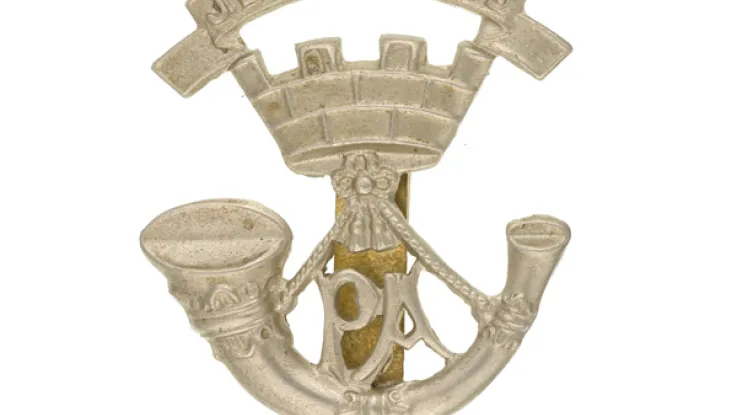Origins
In January 1800, the British Army formed a corps of 40 officers and men to experiment with the use of the newly developed Baker rifle.
Although slower to load than the musket (the standard British infantry weapon of the time), the Baker rifle offered much greater accuracy and range. It was also shorter than the musket, but had a similar overall reach when fixed with its longer sword bayonet.
The new corps was made up of volunteers from existing line infantry regiments and was led by Coote Manningham and William Stewart. An early adopter of camouflage, its troops wore green jackets instead of redcoats. They were also taught to operate in pairs on their own initiative rather than in line formation under strict orders.
Early deployments
Formally named the Corps of Riflemen in August 1800, this new unit saw its first action that same month during the unsuccessful raid on the Spanish coastal fortress of Ferrol.
By 1803, the experiment had been deemed a success. The unit was given the numeral 95 in the line infantry order of precedence, becoming the 95th Regiment of Foot. It moved to Shorncliffe on the Kent coast, where it was was brigaded together with the 43rd and 52nd Foot for light infantry training under the command of General Sir John Moore.
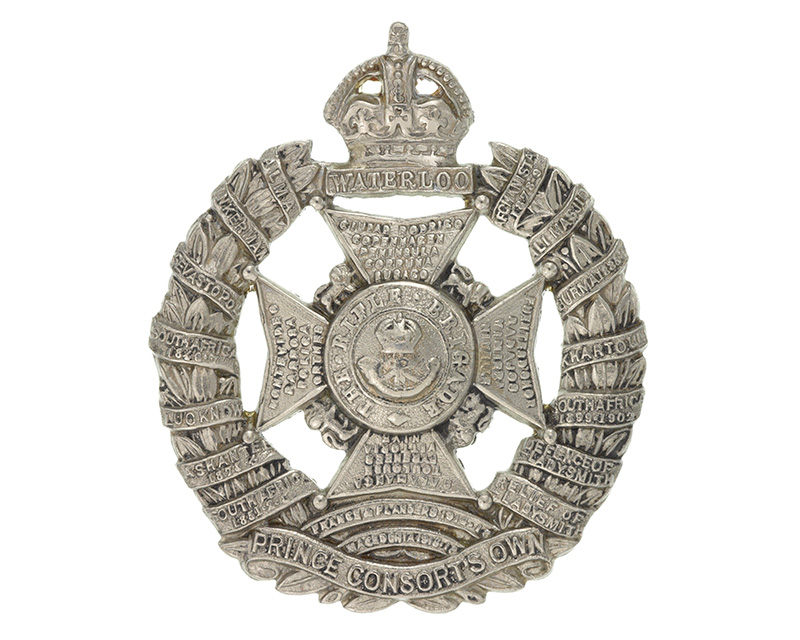
Cap badge, The Rifle Brigade (Prince Consort’s Own), 1927
Napoleonic Wars
The regiment spent its early years heavily engaged in northern Europe. It sent a detachment to serve as sharpshooters on Admiral Nelson’s ships at the First Battle of Copenhagen in April 1801.
On land, it contributed to the capture of Bremen in 1805 and the Second Battle of Copenhagen in 1807. Its 1st and 2nd Battalions also sent detachments as part of an expedition to reinforce the failed British invasion of Spanish colonies in South America in 1806.
In 1808, three companies from 1st Battalion set sail to help Sweden in its war against the Russian Empire. They were eventually re-routed to the Iberian Peninsula, joining the men of 2nd Battalion in Portugal. On 15 August 1808, Lieutenant Ralph Bunbury of the 95th Rifles became the first British officer killed in the Peninsular War (1808-14).
Apart from 2nd Battalion's brief involvement in the Walcheren expedition of 1809, both 1st and 2nd Battalions served on the Peninsula throughout the war there.
Meanwhile, the regiment raised another regular battalion in Kent in 1809, using volunteers from the militia. This immediately split into two detachments.
The first detachment of this new 3rd Battalion fought in the Peninsula for five years. In December 1814, it was sent to America to serve in the War of 1812 (1812-15), arriving back in Europe the following year, but too late for the Battle of Waterloo.
The second detachment was part of a force sent to Swedish Pomerania and Northern Holland in 1813 during Napoleon’s fighting retreat through Germany and the Low Countries. It then fought at Waterloo alongside 1st and 2nd Battalions.
In February 1816, the regiment was renamed The Rifle Brigade and the numeral 95 was given to another regiment. Three years later, 3rd Battalion was disbanded.
Victorian era
During the 1840s, 1st Battalion served in South Africa. The following decade, both battalions fought in the Crimean War (1854-55), earning eight Victoria Crosses, the highest total for any single regiment.
Prince Albert - the prince consort to Queen Victoria - was the regiment’s colonel-in-chief from 1852 to 1861. During this time, it took on his name, becoming The Prince Consort's Own Rifle Brigade. This would evolve to become The Rifle Brigade (Prince Consort's Own) in the wake of the First World War.
In the mid-1850s, the regiment raised new 3rd and 4th Battalions. During the Indian Mutiny (1857-59), a detachment from 3rd Battalion joined 2nd Battalion to form a Camel Corps.
In the 1860s, 4th Battalion served in Canada alongside 1st Battalion. They were there for the Trent Affair - a period of heightened Anglo-American tensions during the US Civil War (1861-65) - and the border raids carried out by the Fenian Brotherhood (1866-71). Private Timothy O'Hea was awarded a peacetime Victoria Cross for putting out a fire in an ammunition-filled railway car.
All four battalions spent long periods in India in the second half of the 19th century. This included service on the North West Frontier for 3rd Battalion and in the Second Afghan War (1878-80) for 4th Battalion. Meanwhile, 2nd Battalion also fought in the Third Ashanti War (1873-74) and in Sudan (1898).
1st and 2nd Battalions both served throughout the Boer War (1899-1902), fighting at Colenso (1899), Vaal Krantz (1900), Ladysmith (1900) and many other engagements.
Reforms
Unlike many other regiments, the Rifle Brigade was not assigned to a specific county during the 1881 army reforms. Instead, it took on several militia and volunteer units, especially from Ireland and Middlesex.
In 1908, it was disaffiliated from its Irish militia units. That same year, seven of its volunteer battalions were transferred into the London Regiment. These were re-affiliated to it in 1916, while remaining part of the London Regiment.
First World War
All four of the regiment’s regular battalions were on the Western Front by December 1914. 1st, 2nd and 3rd Battalions remained there until the end of the war in 1918, but 4th Battalion switched to the Macedonian front in November 1915.
The regiment also raised seven Territorial and 11 New Army battalions during the conflict. These served in France and Flanders, India, Egypt and at home.
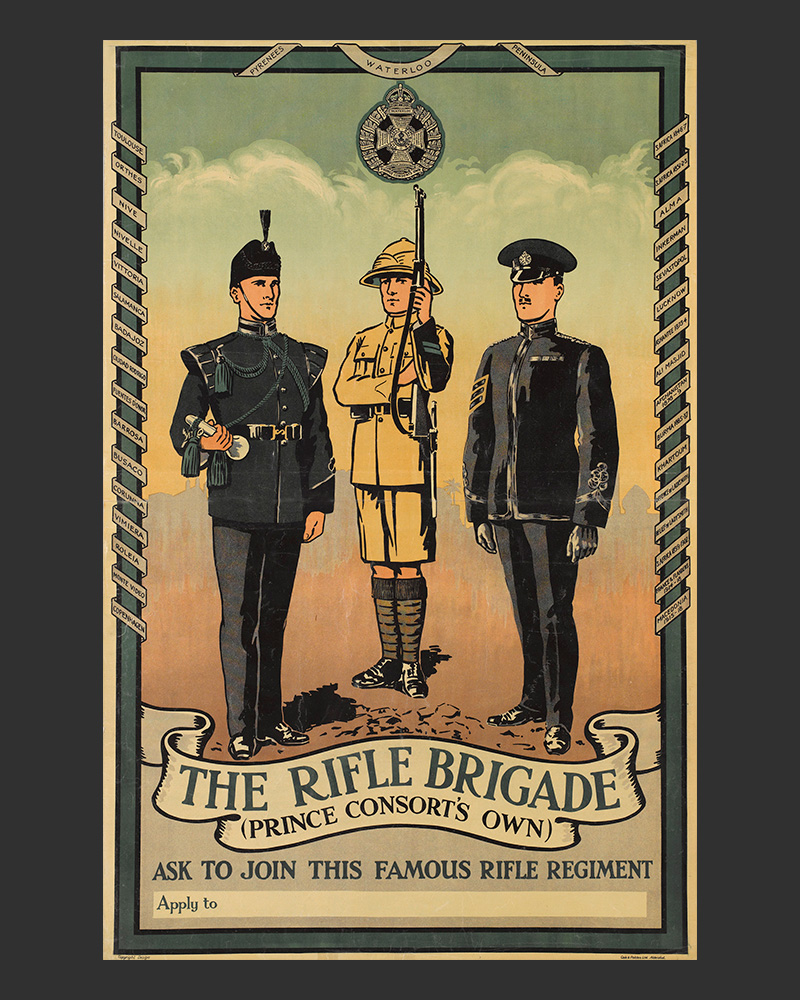
Rifle Brigade (Prince Consort’s Own) recruiting poster, c1920
Inter-war years
In 1919, 1st Battalion was sent to garrison the new British mandate of Iraq. It then had another long spell in India from 1921 to 1933.
2nd Battalion spent much of the inter-war period on garrison duty in Britain. It was sent to Ireland in 1920 during the War of Independence (1919-21), and then to Turkey in 1922 as part of the occupation of Constantinople (now Istanbul).
3rd and 4th Battalions were disbanded in 1922. In the late 1930s, the two remaining regular battalions (1st and 2nd) were converted into motorised units.
Second World War
By the outbreak of the Second World War (1939-45), 2nd Battalion was in Palestine. In 1940, 1st Battalion deployed to France and was captured by the Germans while holding the Dunkirk perimeter in May of that year.
Five months later, a new 1st Battalion was formed in Britain. It went on to fight alongside 2nd Battalion in the Middle East and North Africa. For 2nd Battalion, this included service at El Alamein in 1942.
From 1943, 1st Battalion fought in Sicily and Italy, before taking part in the Normandy landings in June 1944 and the subsequent advance across North West Europe. Meanwhile, 2nd Battalion switched to the Italian theatre in April 1944, ending the war on occupation duties in Austria.
The Rifle Brigade also raised 15 Territorial battalions between during the conflict.
Post-war deployments
Both regular battalions served in Germany after the war. Some officers were sent to join ‘T-Force’, seizing German industrial machinery and military secrets as part of British reparations.
In 1948, the Rifle Brigade was reduced to a single-battalion regiment and placed under the umbrella of the new Green Jackets Brigade. This formation also included the Oxfordshire and Buckinghamshire Light Infantry and the King's Royal Rifle Corps.
After returning to England in 1953, the Rifle Brigade was then sent to fight insurgencies in Kenya and Malaya in 1955 and 1956 respectively.
Its final overseas postings were to Germany in 1959, Cyprus in 1963 and the Far East in 1965.
Legacy
In 1966, the three regiments of the Green Jackets Brigade were amalgamated to form The Royal Green Jackets. The Rifle Brigade (which had been renamed the 3rd Green Jackets in 1958) became the new unit's 3rd Battalion.
Regimental museums
The National Army Museum works with a network of Regimental and Corps Museums across the UK to help preserve and share the history and traditions of the Army and its soldiers.
Discover more about The Rifle Brigade (Prince Consort's Own) by visiting The Rifleman's Museum in Winchester.

